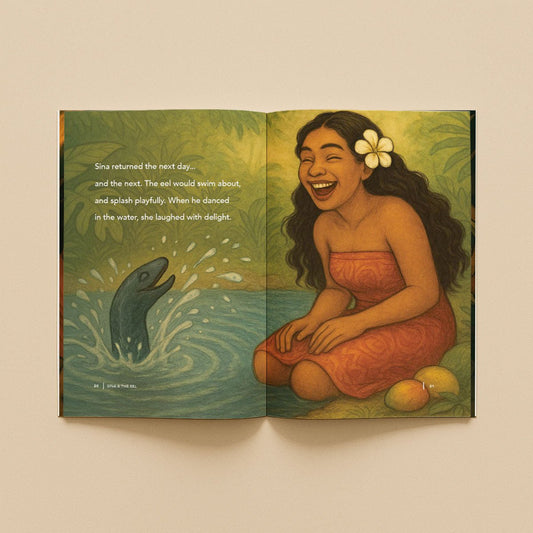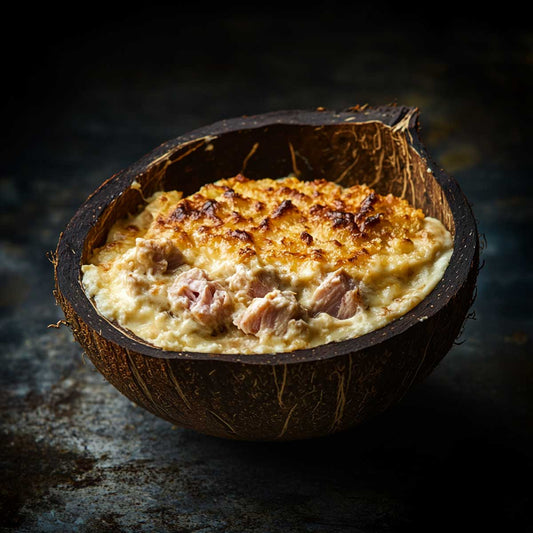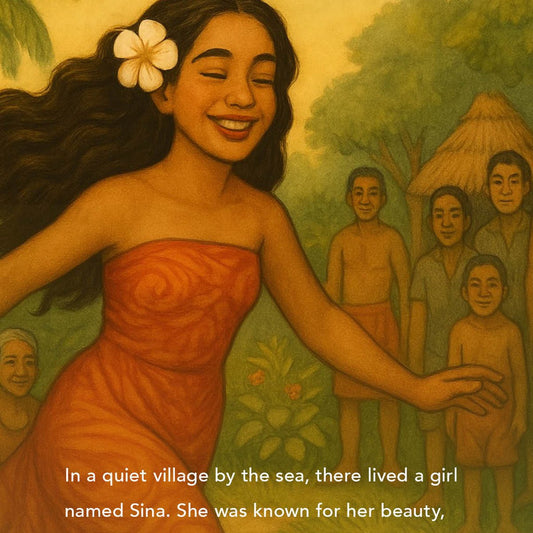The Sacred Tapestry of Skin: How Traditional Samoan Tattoos Are Done
The word "tattoo" itself is widely believed to have originated from the Polynesian word tatau, a testament to the profound and enduring role that this art form has played in Pacific culture. Among all the islands, the people of Sāmoa are celebrated for preserving the most unbroken, centuries-old tradition of hand-tapped tattooing. This sacred practice, known as tatau or the respectful term malofie, is more than mere body decoration; it is an enduring covenant between the individual, their family, their ancestors, and their culture.
For Samoan men, receiving the peʻa (a comprehensive tattoo from the waist to the knees) and for women, the malu (a delicate pattern from the upper thigh to behind the knee) is a life-changing rite of passage. But how exactly is this monumental and highly respected art accomplished? The traditional method relies not on electricity or needles, but on a spiritual connection forged through simple, handmade tools and an incredible endurance of pain.
This article dives deep into the ancient and rigorous process of how traditional Samoan tattoos are done, honoring the skill of the Master Tattooist and the courage of the recipient.
The Master Artist: The Tufuga Ta Tatau
The entire process of the Samoan tatau revolves around one central figure: the Tufuga Ta Tatau (Master Tattooist). This is not a title easily earned; it is inherited, respected, and passed down through specific families, often the ʻāiga (families) of Suʻa or Tulouēna, who have preserved the lineage of the art for generations. The Tufuga is a highly revered person in Samoan society, entrusted with the immense cultural responsibility of marking a person's life story onto their skin.
- Inherited Skill: The knowledge, design lexicon, and tools are traditionally passed from father to son or within the extended family, ensuring the preservation of both the technique and the spiritual integrity of the tatau.
- Design Architect: The Tufuga is responsible for designing the complex patterns that cover the body, ensuring the motifs reflect the recipient's genealogy, status, and personal journey, all while adhering to the strict structural rules of the peʻa or malu.
- The Assistants: The Tufuga works with one or more assistants, often apprentices, known as the ʻau toso. Their vital role is to stretch the skin taut, wipe away excess ink and blood, and, perhaps most importantly, provide moral and physical support to the recipient throughout the grueling sessions.
The Tools of the Trade: Bone, Shell, and Wood
What distinguishes the traditional Samoan tatau from modern tattooing is the use of handcrafted tools, which have remained essentially unchanged for centuries. These implements are treated with the utmost respect, and the tools themselves are collectively known as the ʻau.
1. The Comb (Au)
The core instrument is the comb, or chisel, which serves as the needle. These are not single needles, but rather combs of varying widths, meticulously crafted to produce different line weights and shading effects.
- Material: Traditionally, the combs were fashioned from sharpened segments of boar tusks or sometimes human bone. Today, for hygiene and ethical reasons, bone is often replaced by finely serrated stainless steel or hard plastic.
-
Sizes: A full set of ʻau includes:
- Au Moa: Wide-toothed combs used for filling in large, solid areas of black, particularly for the men’s peʻa.
- Au Faʻa-Talatala: Medium-sized combs for borders and medium lines.
- Au Fiti: The finest combs, used for delicate lines and dot work, essential for the intricate patterns of the malu.
- Assembly: The comb is carefully lashed to a small, flat plate (traditionally turtle shell, now often plastic or metal) which is then attached to a wooden handle using coconut fiber or modern thread.
2. The Mallet (Sausau)
The Sausau is a short, sturdy wooden rod used to strike the wooden handle of the ʻau. This percussive action drives the teeth of the comb through the skin, depositing the pigment.
- The Sound: The rhythmic tapping of the sausau against the ʻau is where the word tatau originates, an onomatopoeic representation of the continuous "tap-tap" sound that defines the tattooing session.
3. The Pigment (Tāto)
The traditional pigment is an intensely dark, durable black ink made from natural soot.
- Process: The soot is collected from the burned kernel of the lama nut (candlenut). This fine soot is then mixed with water or sugar water to create a stable, dark pigment.
- Application: The Tufuga uses a palette, often a taro leaf stretched over a half-coconut shell, to hold and mix the ink before drawing it onto the teeth of the ʻau for application.
The Process: Endurance, Ceremony, and Transformation
The traditional tatau is not a single appointment; it is a profound and prolonged ceremonial process that can take many days, weeks, or even months to complete, depending on the complexity, the individual's pain tolerance, and the need for healing between sessions.
Step 1: Preparation and Ceremony
The recipient, often a young man or woman entering adulthood or ascending to a new social status, undergoes spiritual and physical preparation. The tattooing takes place on woven mats on the floor of a designated space, often a family's traditional home (fale).
- The Setting: The setting is communal, involving family members who attend (at a respectful distance) to offer encouragement, sing traditional songs, and witness the ordeal. This communal support is integral to the process.
- The Covenant: The Tufuga and the recipient enter a sacred contract, beginning the process with prayers and blessings, invoking the protection of ancestors and the ancient deities.
Step 2: The Outline and Design
Unlike modern tattooing, the Tufuga does not typically use a stencil. The initial framework is often drawn onto the skin freehand with a piece of charcoal or a brush, though the pattern is ultimately guided by the Tufuga’s visual memory and the established structure of the tatau.
- Peʻa Structure: The male peʻa follows a strict order, always beginning at the small of the back (lumbar region) and working its way down toward the knees. The very last section to be completed is the navel (pute), which holds great symbolic importance.
- Malu Structure: The female malu is less dense, often resembling delicate filigree and lace, but it must always include a signature diamond-shaped motif known as the malu on the back of the knee, symbolizing protection and shelter.
Step 3: The Tapping Session
The Tufuga dips the comb (ʻau) into the ink, places it against the skin, and uses the mallet (sausau) to strike the handle. Each strike punctures the skin and deposits the ink beneath the surface. This action is repeated countless times, creating intricate patterns line by line, solid area by solid area.
- The Pain: The pain is intense, raw, and unrelenting, often described as one of the most severe tests of will in Samoan culture. The skin swells, blood flows, and the process is a true test of the individual’s courage (to’a) and commitment to their family and community.
- The Interruption: Sessions last several hours, followed by a mandatory period of rest and healing. The pain endured and overcome is what transforms the recipient, physically and spiritually, into a Sogaʻimiti (tattooed man) or a woman of enhanced status.
The Risk of the Peʻa Mutu
To start the tatau and not finish it is a source of immense shame, known as peʻa mutu (incomplete tatau). This is why the endurance of the pain is so highly valued; it is a visual, permanent declaration of the individual's commitment to their duties, their community, and the cultural laws of Faʻa Sāmoa.
The Meaning: Identity Forged in Ink
The question of how Samoan tattoos are done is inseparable from the meaning they carry. The physical process of the tatau embodies the spiritual transformation it signifies.
- Rites of Passage: The tatau is a public display that the wearer is ready for service, ready for adulthood, and ready to assume the full responsibilities of their social standing, particularly in the role of a family or village leader.
- Family Lineage: The patterns are complex geometric and natural motifs that represent the sea, the land, and the celestial navigation of the ancestors. Each line, hook, and area of solid black connects the wearer to their genealogy (gafa) and their family's place in the world.
- Resilience and Strength: The completed peʻa or malu is a silent testament to the inner strength and resilience required to endure weeks of pain. It is a source of cultural pride that distinguishes Samoan men and women from all others.
The art of the Tufuga Ta Tatau continues to thrive, not just in Sāmoa but across the Samoan diaspora worldwide. Even as new materials and modern sanitation methods are adopted, the fundamental hand-tapping technique and the sacred protocols remain the same, preserving a legacy that spans over 3,000 years.
The profound connection to lineage, strength, and the ocean is woven into every aspect of Samoan life and art. Bring the spirit of the Malofie and the wisdom of the Tufuga into your daily life. Explore our collection of authentic, Samoan-inspired goods and accessories today.















